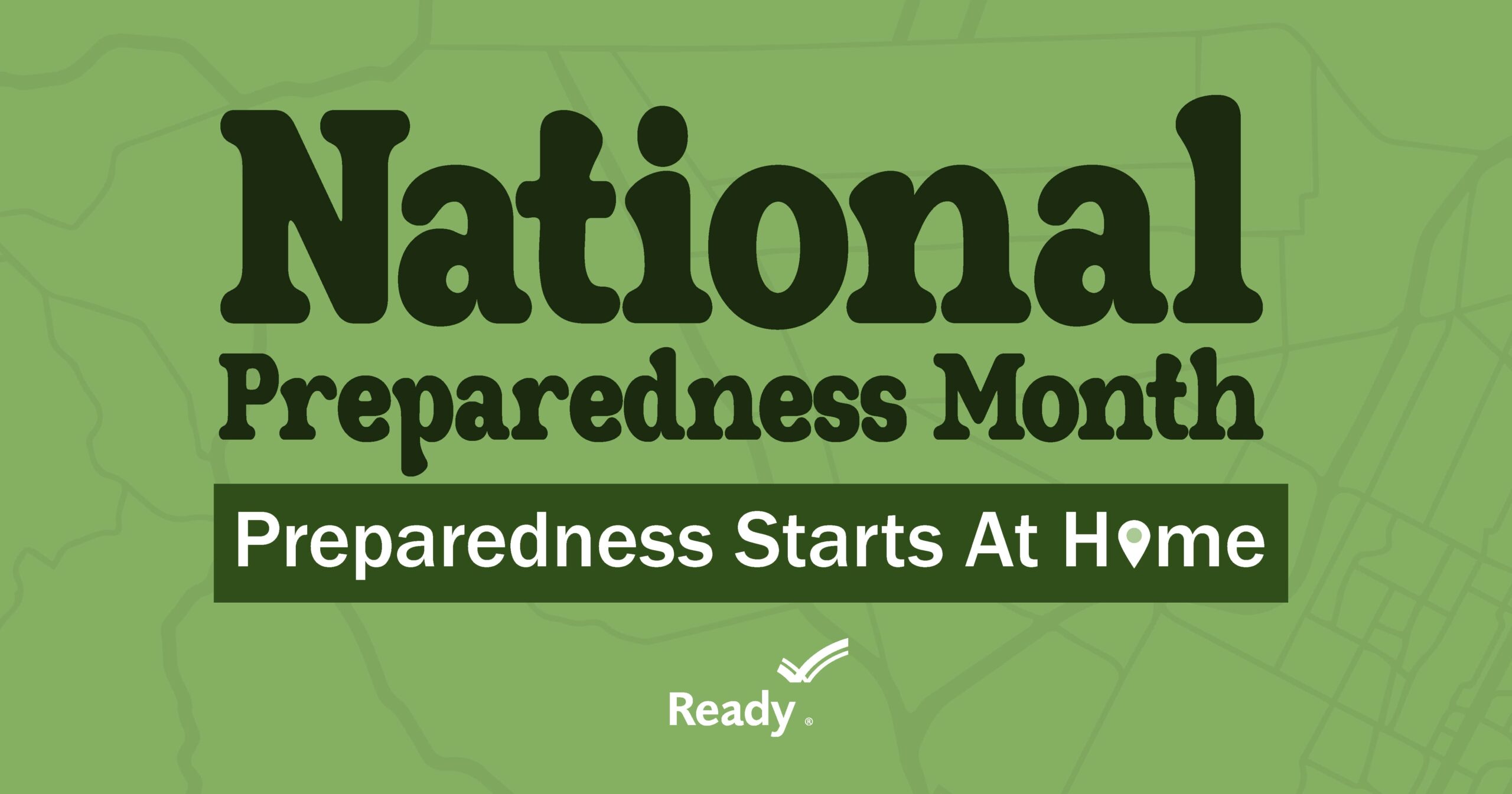September is National Preparedness Month. Every September, Americans are reminded of a simple but powerful truth: disasters don’t wait. Whether it’s a wildfire sweeping through a dry landscape, a hurricane barreling toward the coast, or a sudden power outage in the dead of winter, emergencies can strike with little warning. That’s why National Preparedness Month exists, to encourage individuals, families, and communities to take proactive steps to protect themselves before disaster hits.
This year’s theme is: “Preparedness Starts at Home.” It’s a call to action that emphasizes personal responsibility and community resilience. The idea is simple: if each household is prepared, the entire community becomes stronger and more capable of weathering any storm, literally and figuratively.
This year, Ready.gov is urging Americans to take four essential actions to prepare for emergencies.
1. Know Your Risks: Understand the Emergencies That Could Affect You
Preparedness begins with awareness. You can’t plan for what you don’t understand. The first step is to identify the types of disasters most likely to occur in your area and learn how to respond effectively.
Understanding your local hazards helps you tailor your emergency plans and supplies. Ready.gov offers detailed guides on various disaster types, from earthquakes to pandemics, so you can learn the best practices for staying safe.
Sign up for local emergency alerts through your county’s emergency management office or use apps like FEMA Mobile or NOAA Weather Radio. These tools provide real-time updates and instructions during a crisis.
2. Make a Family Emergency Plan: Communication Is Key
Emergencies are chaotic. Cell towers may be down. Roads may be blocked. Loved ones may be separated. That’s why having a family emergency plan is crucial.
Your plan should include:
- Communication strategy: How will you contact each other if phones are down? Consider using text messages or social media, which may work when calls don’t.
- Meeting locations: Choose two—one near your home and one outside your neighborhood in case of evacuation.
- Evacuation routes: Know multiple ways out of your home and community.
- Special needs: Account for pets, elderly family members, and those with medical conditions or disabilities.
It’s also wise to practice your plan. Conduct a family drill once or twice a year to ensure everyone knows what to do. Children especially benefit from repetition and clarity.
Ready.gov offers a printable Family Emergency Plan template to guide you through the process.
3. Build an Emergency Supply Kit: Your Lifeline in a Crisis
Imagine being stuck at home for several days without power, running water, or access to stores. That’s where your emergency supply kit comes in. It’s your lifeline when resources are scarce.
A basic kit should include:
- Water: One gallon per person per day (for drinking and sanitation)
- Food: Non-perishable items like canned goods, granola bars, and dried fruit
- Flashlight and batteries
- First aid kit
- Medications and medical supplies
- Important documents: IDs, insurance papers, bank info, stored in a waterproof container
- Multi-tool or manual can opener
- Hygiene items: Soap, hand sanitizer, feminine products, toothbrushes
- Blankets or sleeping bags
- Cash: In case ATMs or card readers aren’t working
- Any special needs
Store your kit in a cool, dry place and check it every six months to replace expired items. You might also consider creating smaller “go bags” for each family member in case you need to evacuate quickly.
4. Get Involved in Your Community: Preparedness Is a Team Effort
While individual preparedness is vital, community involvement amplifies resilience. When neighbors help neighbors, everyone benefits.
Here’s how you can get involved:
- Join a CERT (Community Emergency Response Team): These volunteer groups receive training in basic disaster response skills like fire safety, search and rescue, and medical operations.
- Take CPR and first aid classes: Offered by organizations like the American Red Cross, these skills can save lives.
- Volunteer with local emergency management agencies: Help with logistics, outreach, or disaster recovery efforts.
- Host a preparedness event: Organize a block party or workshop to share tips and resources with your neighborhood.
- Check on vulnerable neighbors: Seniors, people with disabilities, and those living alone may need extra support during emergencies.
Community preparedness isn’t just about logistics—it’s about building trust, sharing knowledge, and fostering a culture of readiness.
The Psychology of Preparedness
Preparedness isn’t just physical, it’s psychological. Studies show that people who feel prepared experience less stress and anxiety during disasters. They’re more likely to act decisively and help others.
Conversely, those who feel helpless or uninformed may freeze or panic. That’s why education and planning are so powerful, they give you a sense of control in uncontrollable situations.
Preparedness also builds resilience, the ability to bounce back after adversity. Resilient communities recover faster, suffer fewer losses, and maintain stronger social bonds.
Final Thoughts
National Preparedness Month isn’t just a government initiative; it’s a reminder that you have the power to protect what matters most. By taking these four steps—knowing your risks, making a plan, building a kit, and getting involved—you’re not just preparing for disaster. You’re investing in peace of mind, safety, and community strength.
So, this September, take a moment to ask yourself: If disaster struck tomorrow, would I be ready?
If the answer is no, don’t worry. Start small. Pick one action. Then build from there. Because preparedness doesn’t happen overnight, but it does start at home.
